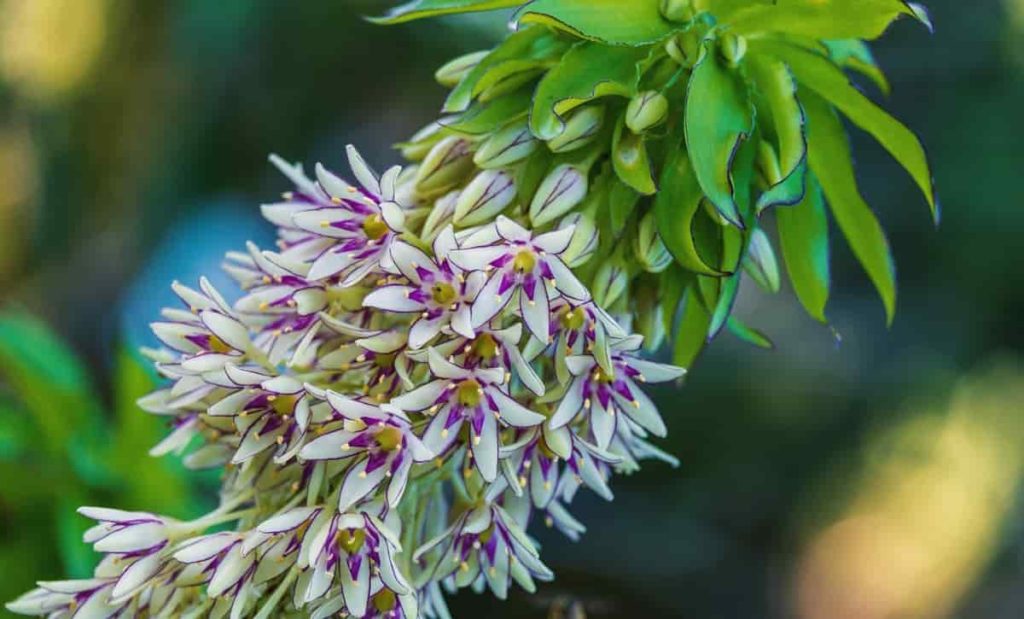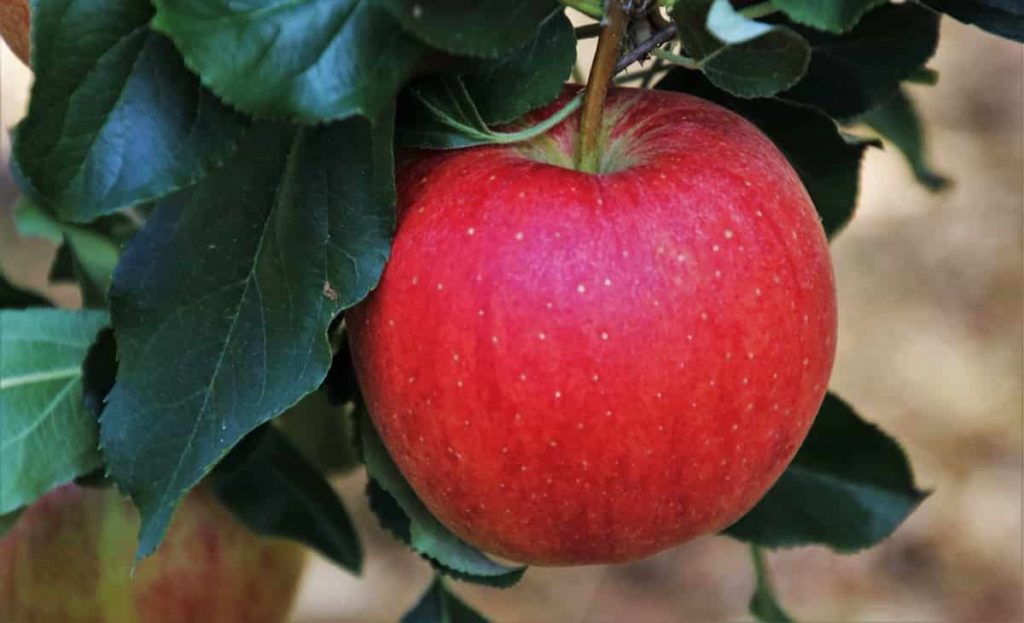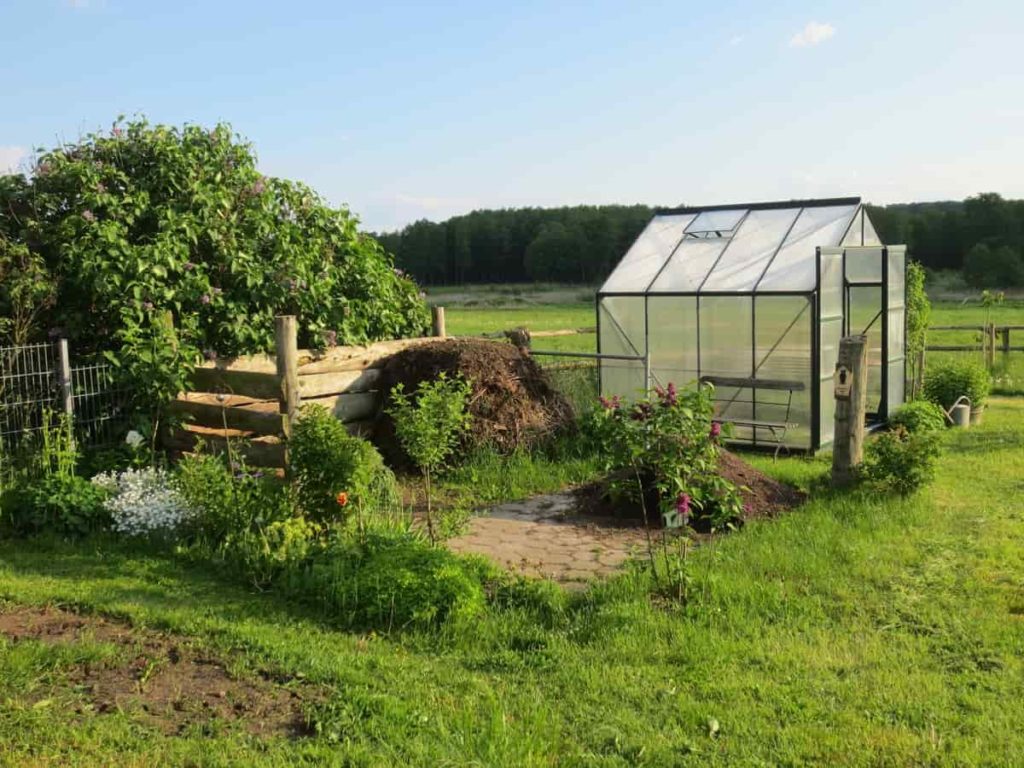Introduction to Gardening Tips for April: April is a good time to sow your favorite vegetable seeds indoors, or straight out if it’s hot enough, prepare for bumper crop summer. And if you want to fill your beds, borders, and containers with fragrance and color, keep sowing your favorite flower seeds as well.
But be aware of the changing weather and check weather forecasts. The weather is unexpected in April and we can take anything from heatwaves to ground frost and snow, be prepared. In the middle of spring, there’s a lot to do in the garden. Not only are the days getting longer, but the soil is also starting to heat up, which means a lot is happening in the potting shed.
Gardening tips for April, flower, vegetable, herb, & fruit gardening in April, greenhouse care, trees & shrubs care and general plant maintenance in April

Flower gardening in April
- Hardy annuals can be sown in pots to add color to the garden.
- Modular trays are very beneficial for sowing Hardy summer plants like Marigolds, Lobelia, and Petunia. You’ll need to cover them or sow them at the right temperature, in a hot propagator, only to keep them out when the weather is a reliably hot day and night.
- Sweet peas can be sown outdoors this month. Plant the sown sweet peas of autumn that are raised in pots, and prepare your Wigwam support to climb them, using a light twine to tie the plants.
- Enjoy the instant color by applying Primulas and Polyanthas are planted in containers and front of the borders.
- Protect new shoots of Hostas, Delphinium, lupins, and other weak plants from slugs and snails.
- Plant Pineapple Lily bulbs in pots for interesting summer flowers.
- Spray new leaves of disease-infected roses with fungicides to control Mildew, Rust, and blackspot.
- Sow Sunflowers in the sun, open space, then regularly protect water and seedlings from slugs and snails.
- Check the Aphides on the rose and rub them before they turn into major infections.
- Add Water Lilies and Iris, to garden ponds.
- If you started sowing in early March, or in February, you might have young Hardy annuals now ready to be planted in the ground.
- At the end of the month, in light areas, you may be able to plant up hanging baskets for summer. Use slow-release fertilizer and water retention gel when planting hanging baskets.
- When you have a lot of space that becomes accessible in the greenhouse, put the cuttings of the tender perennials taken last summer and earlier this year in the pot. You can increase the number of plants by taking the largest cutting out of the new plants.
- Plant summer flowering bulbs, if not done in advance. First prepare the soil, ensuring that drainage is enough to prevent the bulbs from rotting. For example, Anemone coronaria tuber requires particularly well-drained soil.
- You can still plant herbal plants such as Geranium, Astrantia, and oriental poppies. Check that the plants you buy have strong, green shoots and plant them in well-prepared soil.
- Apply fertilizer for general purposes on borders and beds. Be careful not to damage the emerging shoots, or burn them with fertilizer.
- Aphids can grow faster during mild spells. Get rid of early diseases by hand to prevent the problem from getting out of hand. Protect sweet pea plants in particular, as they can obtain sweet peas viruses.
- Continue to protect Lilly, Delphinium, Hostas, and other new shoots from slugs and snails.
- Monitor the spot of Downy Mildew and black leaf on Winter Pansies. Remove and destroy badly infected plants.
Vegetable gardening in April
- Remove all weeds and prepare vegetable seedbeds.
- Shelter the prepared soil with black plastic sheets to keep it dry and warm.
- Harvest the Asparagus spears when they are not more than 18 cm tall.
- Support Pea and Bean plants now. To support quick and easy Peas, push some twiggy sticks around your plants.
- Thin Carrot seedlings to get good size carrots, do so in the evening when fewer carrot flies are around.
- Sow flowery companions in the veg plot, such as pot Marigolds and Borage.
- Continue to plant Garlic, Shallots, and onion batches every few weeks to extend the crop duration.
- Sow herbs like Parsley, Coriander, Dill, and Chamomile in a sunny bed or container.
- Shelter the emerging seedlings from slugs and snails.
- It is the best time to instruct to sow Carrots, Peas, Beetroot, Winter Cabbage, Broccoli, salad crops, and more.
- Sow Pumpkins, Squash, and Tomatoes in a hot greenhouse or propagator.
- Order your tomato plants now to plant indoors at the end of the month.
- If your Asparagus beds are at least 2 years old, you can now cut down and enjoy spears as they appear. Cut with a very sharp knife when they are 10 inches long.
- If you have an established Thyme plant, go to layer some creeping stems. Cover them with a fine pattern and once they are connected, separate them and apply them in pots or beds.
- This is the best time to Sow Sweet Corn in modular trays.
In case if you miss this: Gardening Tips for January, Ideas, and Techniques

Herb gardening in April
- Now it is a good time to plant young perennial plants with pots like Rosemary, Lemon Balm, and Oregano in small pots. This will give them time to be well established and to be quite productive in the coming season.
- If you haven’t done it yet, also divide the enlarged herbs such as Mint, Echinacea, Bergamot, lady mantle, and yarrow. Distribution will improve their longevity, overall health, and appearance, while also producing more plants that you can plant in other areas.
- Now is also a good time to prune Lavender and other evergreens such as Rosemary and Sage, which will encourage fresh, lush new growth, but avoid cutting into old wood, as it may have the opposite effect.
In case if you miss this: 20 Vegetables to Plant in Winter in India

Fruit gardening in April
- Protect the fruits from frost, covering them with horticultural fleece on cold nights.
- Spray on the emerging leaves of peach and Nectarine trees to prevent the curl of peach leaves. Hiding your Peach plants from rain will also help to decrease the risk of peach leaf curl.
- Mulch well-rotted manure with fruit trees, taking care not to mix around the trunk.
- Dress courtyard fruit trees on top with fresh manure and slow-release manure.
- Feeding of Raspberry canes, fruit bushes, and fruit trees to encourage good crops this season. Apply slowly released fertilizer around their base.
- Now Apple, Pear, Plum, and Cherry trees will start flowering. Don’t worry too much about flowering. You need only 5% or 10% flowers to set the fruit for a good crop.
- Regularly water your newly planted fruit trees.
- Cover Strawberry plants with cloches to sharpen flowers and fruits.
- If a Rhubarb flower appears, cut them near the base to prevent them from stealing food and energy from the plant. Harvest your forced early Rhubarb this month when the stems are about 25 centimeters in length.
- Pick Grapes, Apples, Guava, Pears, Rhubarb, Walnuts, Passion Fruits, Late Peaches.
- Plant evergreen frost hardy fruits like Feijoa and Chilean Guavas.
- It’s the best time to plant Lemon, Orange, Lime, and Mandarin.
- Remember, the fruit needs a position throughout the sun. The shelter is better than prevailing winds.
- The Aphids, Whitefly, and Scale can be about insects, blast with a hose or choose a proper spray from your garden center.
In case if you miss this: Organic Vegetable Gardening in the Balcony

Greenhouse care in April
- Make sure you give greenhouse plants more space as they grow new ones. This will help in avoiding disease and controlling the initial attack of insects.
- Check if plants need to be watered at least every few days and the seedlings will need daily attention.
- Maintain at least 5°C to prevent Fuchsias, Pelargoniums, and other tender plants. Most tropical plants require a high temperature of at least 12°C which will require a greenhouse heater.
- If the weather is hot, apply a slight cover of shade paint on the greenhouse pane to prevent the plants from burning with bright sunlight. Alternatively, a sheet of newspaper or some shade from the garden center works fine as temporary shading for seedlings and young plants.
- If the weather is hot and sunny, you may need to start damping down the greenhouse floor in the morning, spraying water on it will increase moisture levels throughout the glasshouse. This will help reduce red spider mite problems which are similar to dry environments.
- Too much moisture can encourage diseases like Grey mould so be sure to open the vents and doors of Greenhouses on hot days.
- Prick out the seedlings grown in pots and trays as they prepare their first true leaves.
- Sow sweet peas in dark pots and keep them frost-free on greenhouses or sunny windows.
- Start feeding house plants with liquid fertilizer once a week, continuing until autumn.
- Sow fast-growing microgreens, such as Kale and Mustard, for nutritious pickings in just a few weeks.
- Transplant greenhouse Tomatoes to large canes growing and tie in the trunks to provide support.
- Sow herbs including Basil, Chives, Parsley, Fennel, and Coriander in pots or trays,
- Thin heavy fruit sets on Peaches and Nectarines, leaving the fruits about 10 cm apart.
- Runner Beans, French Beans, Cucumbers, Courgettes, Pumpkins, and Sweet Corn seeds are sown in pots.
- Attach guttering to the greenhouse and install a water butt, so you can make good use of the April rains.
- Clean greenhouse glazing to go into as much light as possible.
- Maintain good plant hygiene, pick faded flowers and dead leaves before catching fungal diseases.
- Open greenhouse doors and vents on hot days to improve air circulation, or install automatic vent openers.
In case if you miss this: Top 15 Herbs to Grow on the Terrace

Trees and shrubs care in April
- In cool areas, you can still plant hedging plants, shrubs, trees, and climbers grown from containers. Stakes and rabbit protectors should be fixed at the time of planting to prevent damage to root balls and bark.
- Remember that water and establishment can be problematic for large plants as the weather gets warmer and dryer, and you can delay planting them until October.
- Mulch rose and bush bed with 5 to 8 centimeters of organic matter. This will help in maintaining moisture during dry spells, reducing weeds, and improving soil structure over time. Pay special attention to mulching around Rhododendrons, Azaleas, and Camellias, as flowers get damaged if they are allowed to dry at the end of summer.
- Feed trees, shrubs, and hedges with balanced manure sprinkle it on the root area before applying it to the soil surface. This will benefit young, weak, damaged, or heavily pruned plants in particular.
- Other shrubs that regularly cut hard in the spring to maintain their large or more brightly colored teenage leaves, such as smoke bush can be cut back this month. If you are reluctant to lose all the height you achieved last year you can leave a couple of branches unsorted.
- Stop the process of pruning Forsythia and Chaenomeles until the appearance of flowers, otherwise, this year’s display will be lost.
- Cut any green reverted shoots on the variegated evergreens, to avoid the reversion from being handled.
- Lightly cut the lavenders so they can avoid being too long and woody.
- Loosen the ties of any tree that is digging in the bark, or can do so as soon as the circumference of the trunk girth expands.
- Twining climbers need to be tied regularly and twining around their support.
- Phytophthora root rot can cause mature trees and shrubs to die back. Wet winter weather and poorly drained soil are likely to encourage the problem of sensitive wood plants.
- Place rabbit protectors around newly planted trees and shrubs to protect the bark.
- Avoid planting new roses in areas where roses were growing earlier otherwise new plants may be suffering from rose replanting disease.
- Be aware that insects emerge as temperatures rise. The pests of the Caterpillar, Aphids and fly pests can be annoying during mild spells. Early diseases can often be managed by hand removal and pesticides.
In case if you miss this: Top 18 Flowers to Grow on the Terrace

General plant maintenance in April
- Check compost boxes to see if you have any fertilizer that is ready to be used.
- Improve the drainage of heavy soil by adding lots of organic matter.
- Top dress containers with fresh manure. If your containers are already full, replace the top 5 centimeters of old manure with fresh stuff.
- Apply the weed killer on the weeds in the paving and patios.
- Find symptoms of pests and diseases, early prevention is easier than treating a disease.
- Remove dirt and paving from your routes before summer arrives. Use a pressure washer or a special patio cleaner.
- Buy fresh potting compost and store it in a cool, dry place in preparation for the upcoming season.
- Top bird bath bird feeding stations to encourage birds in your garden.
- Put a bag of barley straw in the ponds to discourage Algae and keep the water clean all summer.
- Lay turf or sow grass seeds to create a new lawn or repair a bad patch.
- If a late frost is predicted, keep cloches or large sheets in hand to protect young plants.
- Cut down unwanted suckers growing around the base of trees and shrubs.
- Remove moss and weeds in turf, and boost growth with nitrogen-rich lawn feed.
- Check that guttering on sheds and greenhouses is debris-free so that April rain fills water butts.
- Pour pumps and fountains back into the ponds, clean the filters thoroughly.
- Treat the problem weeds, such as Nettles and Brambles.
- Find clusters of Aphids on shoot tips and young leaves, and clear before they multiply.
- How to Grow Tomatoes Organically at Home: A Comprehensive Guide
- Organic Gardening on a Budget: Low-Cost Methods and Materials
- Gongura Seed Germination and Planting Methods
- Cabbage Seed Germination and Selection
- Broccoli Seed Germination and Selection
- Asparagus Seed Germination and Variety Selection
- Seasonal Flower Gardening: Best Practices for Spring, Summer, Fall, and Winter
- How to Grow Hibiscus from Flower
- Plantation Ideas for Home Decoration: A Beginners Guide
- Flower Garden Designs and Layouts for Beginners
- Planting and Spacing Techniques in Papaya: A Beginner’s Guide
- Growing Gold: Essential Techniques for Planting Pineapples
- How to Make Kalanchoe Plant Bushy: Home Remedies and Solutions
- 11 Reasons Why Your Gardenia is Not Blooming: Home Remedies and Solutions
- Eco Elegance: The Guide to Designing a Drought-Tolerant Landscape
- Gardening on a Slope: Strategies for Hillside Landscaping
- Nourish and Flourish: Top Organic Mulches for Thriving House Plants
- Everything You Want to Know about Indian Mogra Flower: Discover Uses and Growing
- Green Thumb Success: Expert Tips for Cultivating Greenhouse Pumpkins All Year Round
- Maximize Growth & Flavor: The Ultimate Guide to Companion Planting in Herb Gardens
- How to Control Rhododendron Problems Naturally: Home Remedies and Organic Ways to Fix Them
- Natural Magic: The Remarkable Benefits of Cinnamon for Plants
- Best Steps to Revive Dying Tulip with Natural and Organic Treatment
- 10 Reasons Why Your Angel Trumpet is Not Blooming: Remedies and Treatment
- How to Fix Periwinkle Leaf and Flower-Related Problems: Natural Remedies and Solutions
- How to Fix Zinnias Leaf and Flower Problems: Discover Natural and Home Remedies
- Organic Steps to Induce Lemon Tree Flowers: A Comprehensive Guide
- Bloom Booster: Crafting the Perfect Homemade Bougainvillea Fertilizer
- Optimizing Growth: A Guide to Applying NPK Fertilizer for Potted Plants
- 10 Best Homemade Fertilizers for Rubber Plant: DIY Recipes and Application Method
- How to Boost Female Pumpkin Flowers: Effective Steps for More Flowers and High Yields
- Transform Your Indoor Garden: Top Benefits of Pink Salt for Houseplants
- 10 Best Homemade Fertilizers for Peacock Plants (Calathea): Easy DIY Guide
- Unlock Blooms: 9 Reasons Why Your Potted Chrysanthemum is Not Blooming
- 8 Reasons Why Your Potted Hibiscus is Not Blooming: Fix it with Simple Solutions
- Unlock Blooms: 9 Key Reasons Your Potted Frangipani Won’t Flower